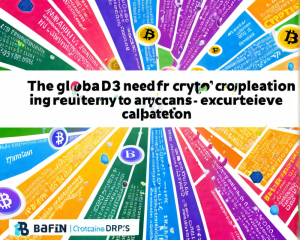Overview of the Digital Euro Assessment
The Institute of International Finance (IIF) has taken a magnifying glass to the European Commission’s proposed digital euro legislation and handed it something akin to a C+ grade: not failing, but certainly not ready for a scholarship. This follow-up analysis reflects on the digital euro bill first introduced in June, along with the impact assessment that came with it.
Evaluating Key Areas of Focus
In its evaluation, the IIF scrutinized seven pivotal areas, with a critical eye on six of them deemed ‘partly addressed.’ The committee pointed out that the cost-benefit analysis felt a bit like an intro to economics class—“basic and high-level,” while others were simply absent or referenced prior studies that didn’t quite cut it.
Financial Stability and Bank Intermediation Concerns
One of the key mechanisms proposed to bolster financial stability revolves around the concept of holding limits, which conveniently haven’t been set—like buying a pizza without knowing the toppings. The lack of enforcement clarity on these limits prompted some concern from the IIF, raising eyebrows regarding the bill’s maturity.
Challenges for Payment Services Providers
Payment services providers (PSPs) are looking at limited ways to recoup implementation costs for digital euro services, which feels a bit like trying to charge a friend for leftover pizza. With caps on fees and credit institutions expected to provide basic services at no cost, the report observed that the ‘economic and liability model challenges’ remain only partially addressed.
Defining Privacy and Governance
Privacy controls for the digital euro are still floating in the ether, with no clear directives on what PSPs will need to do to meet them. Add in the realms of Anti-Money Laundering and cybersecurity, and it’s a recipe for uncertainty. Governance issues are another grey area; the IIF pointed out that with the ECB acting both as a regulator and operator of the digital euro, potential conflicts of interest haunt the legislation like a bad ghost story.
Interoperability Matters
Lastly, the IIF reiterated its stance on interoperability. As they aptly put it: “There is little-to-no value in settling for recreating parallel systems…” A CBDC, or Central Bank Digital Currency, must be integrated with existing digital platforms to avoid duplicative headaches and inefficiencies.
Currently, the development proposal for the digital euro is in tandem with its infrastructure. We may just see the report extended into October, with the ECB pondering its next steps. One thing’s for sure: until the legislation passes, a fully live digital euro will remain more of a dream than reality.















+ There are no comments
Add yours